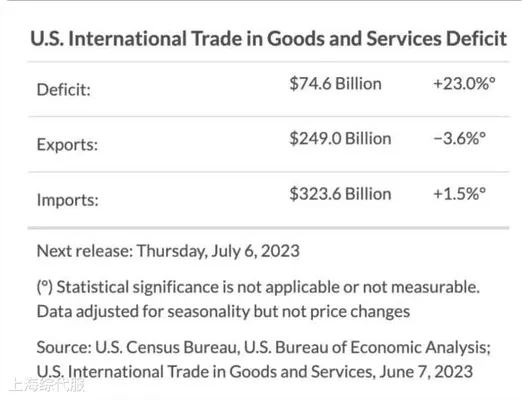Recently, the U.S. trade deficit in April expanded to the highest level in six months, mainly due to increased imports and decreased exports.If this trend continues, trade could have a negative impact on economic growth in the second quarter.
Data from the U.S. Department of Commerce showed that the U.S. trade deficit in commodities and services increased by 23.0% in April to about $746 billion. Among them, the trade deficit in commodities increased by about $14.5 billion to about $961 billion; and the trade surplus in services increased by about $600 million to about $216 billion.
In terms of imports, total U.S. trade imports grew by 1.5% in April to $323.6 billion, mainly due to increased imports of automobiles and parts, industrial goods and materials, and consumer goods, however, total exports fell by 3.6% to $249 billion, the biggest decline in three years.
Among the major U.S. trading partners, U.S. trade deficits with the EU, Mexico and Vietnam amounted to $17.3 billion, $13 billion and $8.5 billion respectively.
Economists predict that trade could reduce GDP by as much as 2.5 percentage points this quarter unless imports reverse, but this is a tough task as U.S. domestic demand continues to be strong, and stronger U.S. dollars and slowing global demand may suppress exports.
The OECD predicts that global trade will grow by 1.6 percent this year compared to a 5% increase in 2022, which will significantly slow down, reflecting the impact of high inflation and rising interest rates on global economic activity.



 Follow customer service WeChat
Follow customer service WeChat